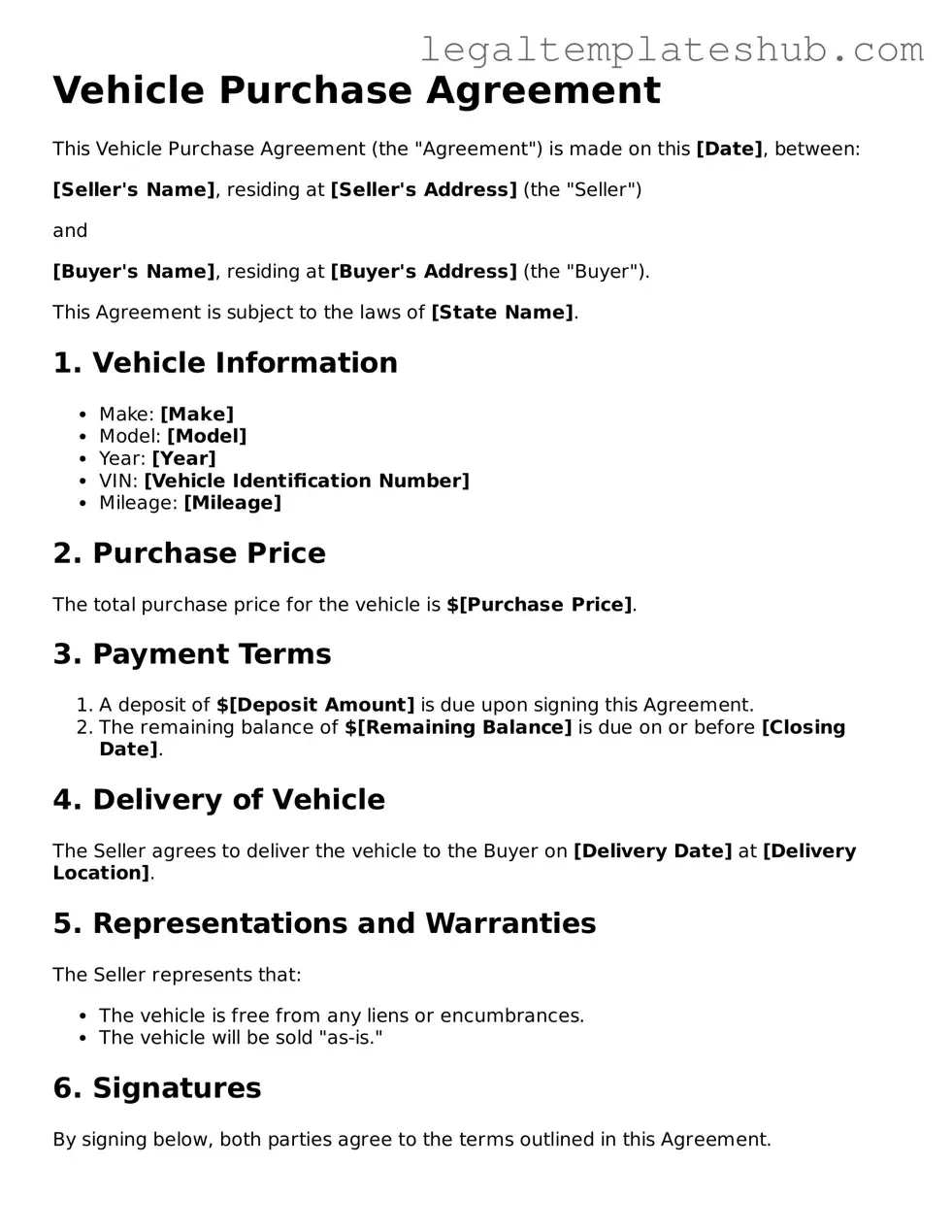Printable Vehicle Purchase Agreement Template
A Vehicle Purchase Agreement form is a legal document that outlines the terms and conditions of a vehicle sale between a buyer and a seller. This agreement ensures that both parties understand their rights and obligations during the transaction. To get started on your vehicle purchase, fill out the form by clicking the button below.
Access Editor
